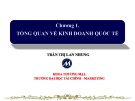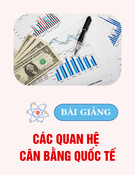
International Business
Session 6

National Trade Policies
Protectionist Policies
Economic Development Programs
◦Export promotion strategy
◦Import substitution strategy
Industrial Policy
◦Key domestic industries chosen, protected,
and promoted
Regional Agreements

Trade Intervention
Should a national government intervene to
protect the country’s domestic firms by
taxing foreign goods entering the domestic market
or constructing other barriers against imports?
Should a national government directly help the
country’s domestic firms increase their
foreign sales through export subsidies,
government-to-government negotiations, and
guaranteed loan programs?

Two Types of Rationale for Protectionism
Defensive barriers safeguard
industries, workers, special interest
groups, protect infant industries and
to promote national security (export
controls).
Offensive barriers pursue a strategic
or public policy objective, such as
increasing employment or generating
taxes.
International Business:
Strategy, Management,
4

National Defense Argument
Country must be self-sufficient in
critical raw materials, machinery, and
technology or else be vulnerable to
foreign threats
Appeals to general public
Protects steel, electronics, and
machine tools industries, and
merchant marines
















![Đề thi Luật Thương mại quốc tế học kì 1 năm 2024-2025 có đáp án (Đề 1) - [kèm đề thi]](https://cdn.tailieu.vn/images/document/thumbnail/2025/20250925/kimphuong1001/135x160/14521758785752.jpg)









